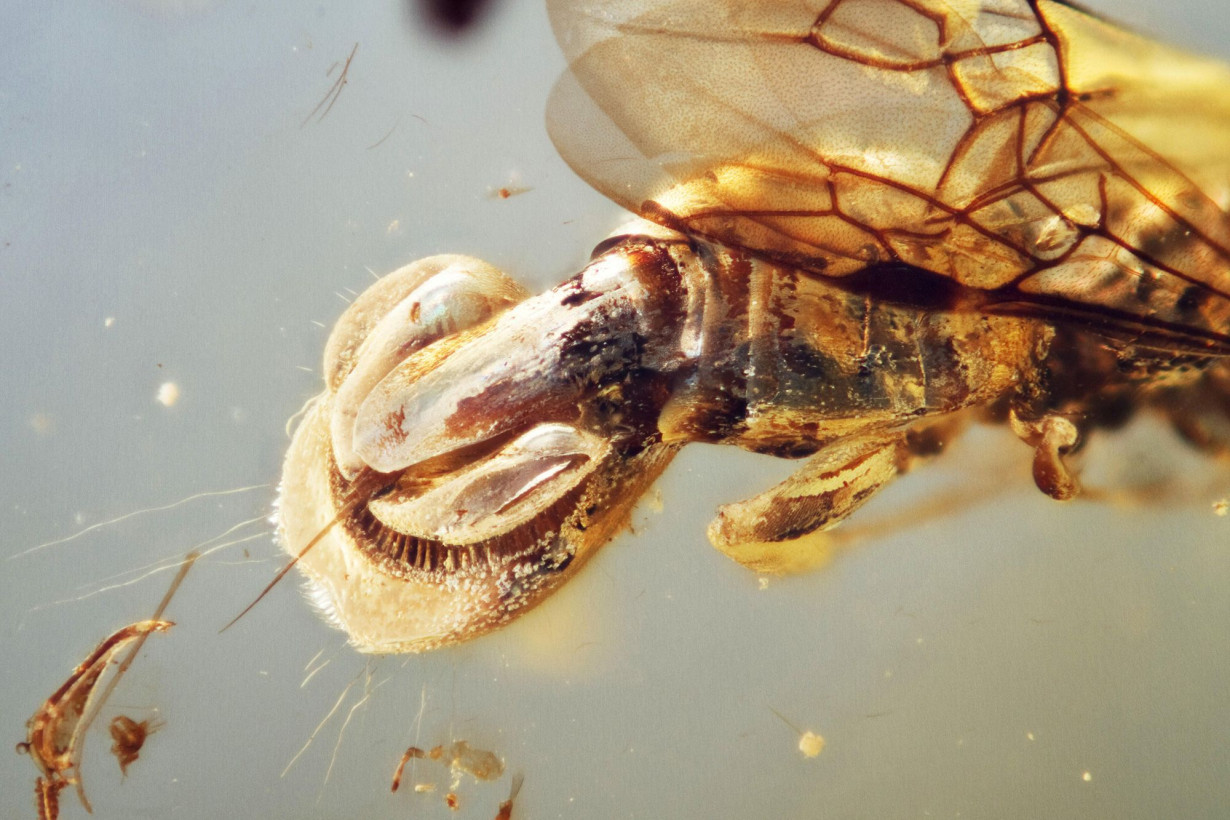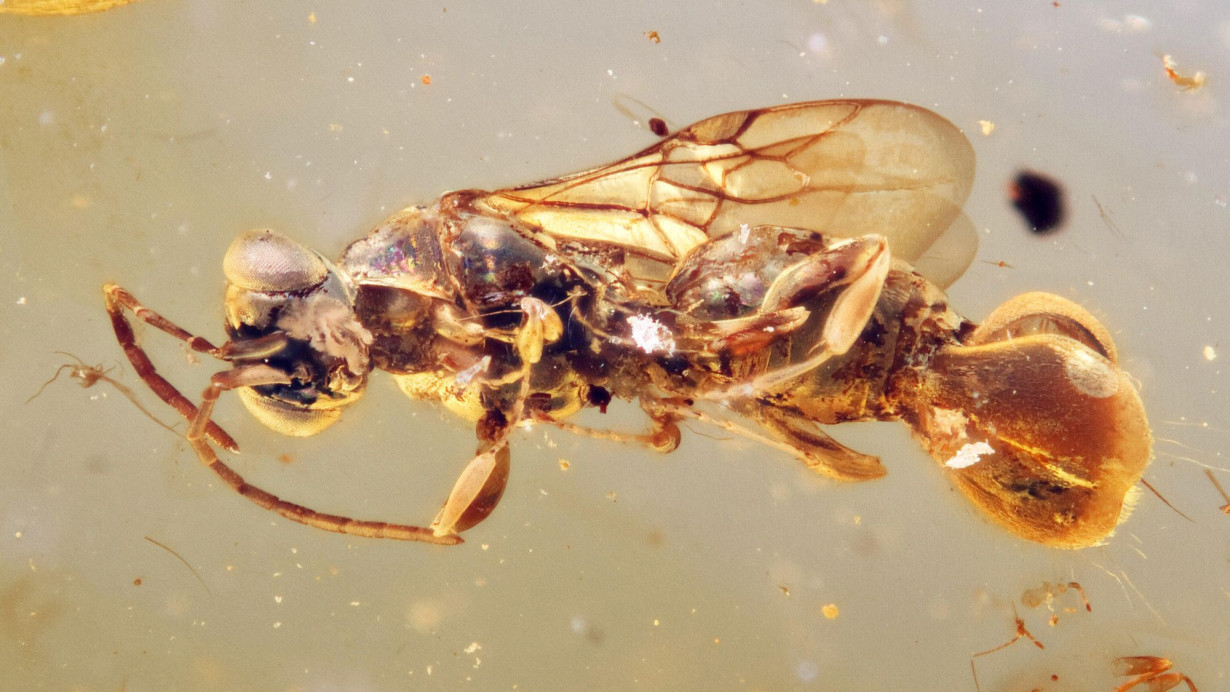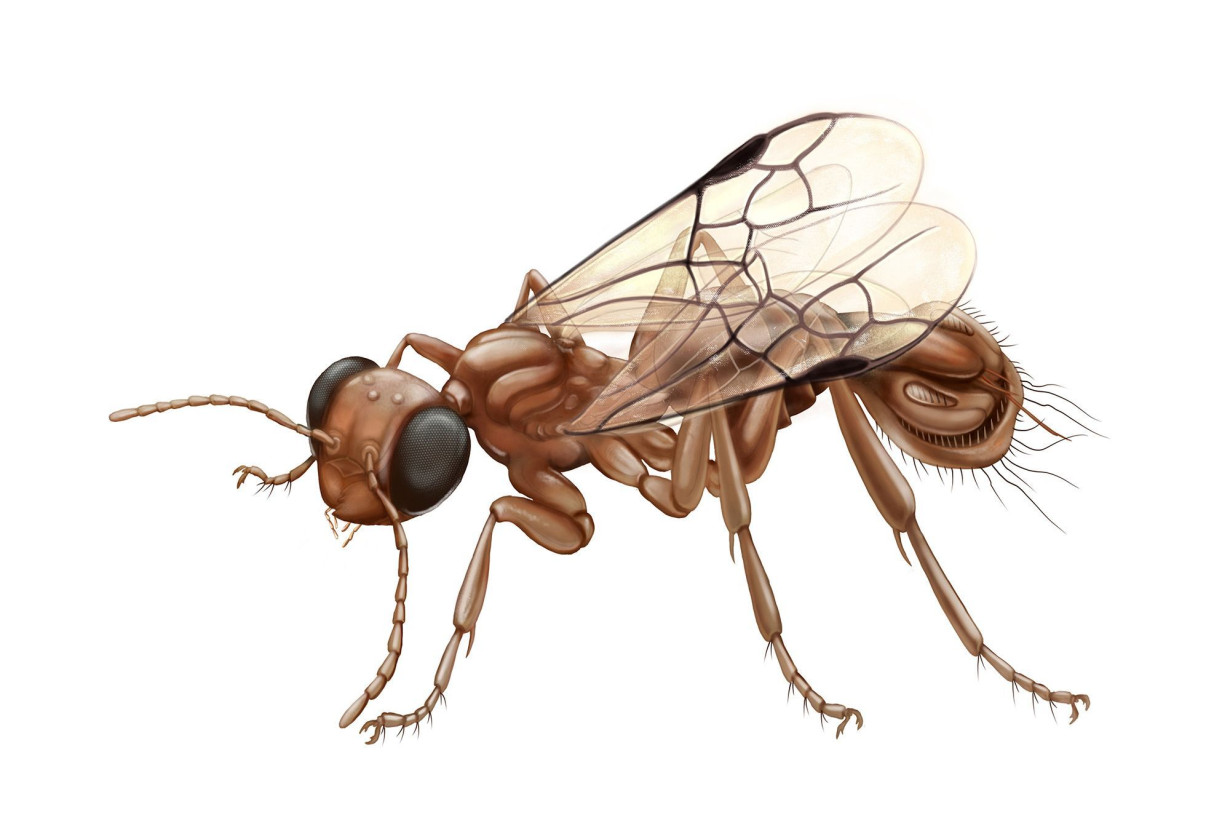(CNN) — A newly identified parasitic wasp that buzzed and flew among dinosaurs 99 million years ago evolved a bizarre mechanism to snare other creatures and force them to unwittingly shelter its young, according to new research.
Paleontologists studied 16 specimens of the tiny wasp preserved in amber dating back to the Cretaceous period that was previously unearthed in Myanmar. The previously unknown species, now named Sirenobethylus charybdis, had a Venus flytrap-like structure on its abdomen that could have allowed it to trap other insects, the researchers reported Thursday in the journal BMC Biology.
“When I looked at the first specimen, I noticed this expansion at the tip of the abdomen, and I thought this must be an air bubble. It’s quite often you see air bubbles around specimens in amber,” said study coauthor Lars Vilhelmsen, a wasp expert and curator at the Natural History Museum of Denmark in Copenhagen.

“But then I looked at a few more specimens and then went back to the first one. This was actually part of the animal.”
Vilhelmsen and his colleagues from Capital Normal University in Beijing determined the structure was movable because it was preserved in different positions on different specimens.
“Sometimes the lower flap, as we call it, is open, and sometimes it’s closed,” Vilhelmsen said. “It was clearly a movable structure and something that was used to grasp something.”
The closest comparison found in nature today is the Venus flytrap, a carnivorous plant with hinged leaves that snap shut when prey flies inside, according to the new study.

“There’s no way you can know how an insect that died 100 million years ago was living. So you look for analogs in modern insect fauna. Do we have anything among wasps or other groups that looks like this?” he said.
“And there’s no real analog within insects. We had to go all the way out of the animal kingdom into the plant kingdom to find something that remotely resembled this.”
However, the researchers reasoned that the wasp likely did not intend to kill with the bizarre grasping structure.
Instead, they theorized that the wasp injected eggs into the trapped body before releasing it, using the creature as an unwitting host for its eggs. Its larvae then started their lives as parasites in or on the host’s body and likely ended up eating the host entirely, Vilhelmsen said. The host was likely a flying insect of a similar size to the wasp, he added.
Similar, although not identical behavior has been observed among living parasitoid wasp species. For example, a group of wasps known as cuckoo wasps lay their eggs in the nest of another wasp species, and the larvae feast on their new hosts’ young once they hatch.
Amber fossils offer a tantalizing, three-dimensional look at the distant past. Besides plants and flowers, a dinosaur tail, a crab, a hell ant, a spider mom and her young, and a firefly have been found entombed in globs of tree resin.
A fossil enthusiast purchased the amber containing Sirenobethylus charybdis, which came from Myanmar’s Kachin region near the border with China, several years ago and donated it to Capital Normal University’s Key Laboratory of Insect Evolution and Environmental Changes in 2016, the authors said.
Amber fossils have been some of paleontology’s most exciting finds in recent years, but ethical concerns about the provenance of amber from the region have emerged, with some paleontologists calling for a moratorium on research on amber sourced from Myanmar following a 2021 military coup.
‘Cretaceous weirdo’
The “Cretaceous weirdo” Sirenobethylus charybdis adds to a growing list of insects from that time that “had adaptations that are outside of the bounds of the critters that are alive today,” said Phil Barden, an associate professor at the New Jersey Institute of Technology who has worked with amber fossils.
“This is significant because there are around a million known insect species — even with all of that living diversity, there are still lots of unexpected surprises in the fossil record that are beyond imagination,” Barden, who was not involved in the study, said via email.
However, he said, while plausible, the flytrap hypothesis is “a bit speculative.”
“There appears to be clear evidence that the abdominal components would have had range of motion. There are also a number of setae, or hairs, that look to be in the right position to detect hosts and potentially immobilize them,” Barden said.
He said it is possible the biological structures might have had another purpose such as detecting prey in soil or perhaps even for transporting baby wasps.
“Today, thousands of parasitoid wasp species are capable of immobilizing hosts without abdominal clasping. Why were these wasps unable to simply rely on their stings or incorporate their mouthparts into host capture as living species do?” Barden asked.
Vilhelmsen said a key factor in his colleagues’ interpretation of the fossil was the location of the wasp’s egg-laying organ — right next to the trap-like structure. However, all the Sirenobethylus charybdis specimens examined so far are female wasps, and so the researchers weren’t able to rule out that the structure could have played a role during mating, according to the study.
“This is something unique, something I never expected to see, and something I couldn’t even imagine would be found,” Vilhelmsen said. “It’s a 10 out of 10.”
The-CNN-Wire
™ & © 2025 Cable News Network, Inc., a Warner Bros. Discovery Company. All rights reserved.

 Trump has begun another trade war. Here's a timeline of how we got here
Trump has begun another trade war. Here's a timeline of how we got here
 Canada's leader laments lost friendship with US in town that sheltered stranded Americans after 9/11
Canada's leader laments lost friendship with US in town that sheltered stranded Americans after 9/11
 Chinese EV giant BYD's fourth-quarter profit leaps 73%
Chinese EV giant BYD's fourth-quarter profit leaps 73%
 You're an American in another land? Prepare to talk about the why and how of Trump 2.0
You're an American in another land? Prepare to talk about the why and how of Trump 2.0
 Chalk talk: Star power, top teams and No. 5 seeds headline the women's March Madness Sweet 16
Chalk talk: Star power, top teams and No. 5 seeds headline the women's March Madness Sweet 16
 Purdue returns to Sweet 16 with 76-62 win over McNeese in March Madness
Purdue returns to Sweet 16 with 76-62 win over McNeese in March Madness








